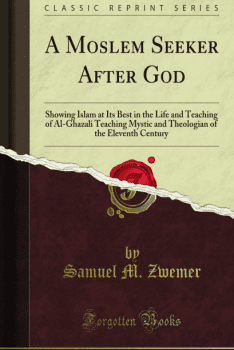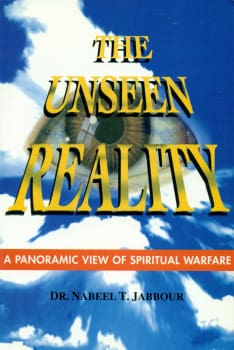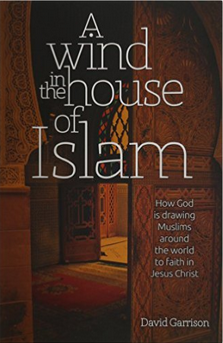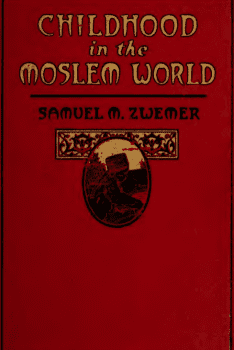Ramon Lull: Apologist to Muslims
Ramon Lull (d. 1316) is one of the most creative, if not one of the most enigmatic, medieval theologians and apologists. A son of the island of Majorca, due east of Valencia, Spain, Lull grew up in an area of the medieval world dominated by both Christians and Muslims.
Ramon Lull (d. 1316) is one of the most creative, if not one of the most enigmatic, medieval theologians and apologists to Muslims. A son of the island of Majorca, due east of Valencia, Spain, Lull grew up in an area of the medieval world dominated by both Christians and Muslims.
By the later thirteenth century the Muslim dominance in Visigoth Spain came to an end, creating an opportunity for Christian apologists to evangelize their Muslim neighbors. At the same time, the new universities of Paris and Bologna, for example, were training philosophers and theologians in the art of scholasticism, making use of the recently rediscovered works of Aristotle. As if this were not enough, there was also, in the early thirteenth century, the creation of the mendicant orders, men whose apostolate was the active life, to travel throughout Europe preaching and teaching the Christian faith. These friars also made ideal missionaries to the Jews and Muslims of Europe, North Africa and the Middle East. It was in this rich intellectual and missional environment that Lull ministered.
Lull’s Art of Arts
Lull believed that Muslims (and Jews) would come to Christian faith through positive argument; that is, he would start with what they already believe rather than attacking their beliefs. To do this, however, Lull would need to demonstrate that “all truths concord and that no knowledge contradicts the ultimate truth.” The way to do this, records Lull, came to him directly from God who “illuminated his mind, giving him the form and method” of his Art. Initially, Lull referred to his method as the Ars major (the Great Art) but later used the generic name of Ars generalis (the General Art). In time he simply referred to it as “the Art.” In summary, Lull’s Art “synthesizes a vast range of techniques for private meditation, scriptural exegesis, and apologetic argument into a single system for ‘discovering’ how all knowledge and being reveals divine truth” (Mark D. Johnson, The Evangelical Rhetoric of Ramon Lull [New York: Oxford University Press, 1996], 12). In essence, Lull likens all knowledge to the Word of God. He does this by establishing nine Divine Dignities or attributes, which are the Absolute Principles of all being and knowledge. There are then nine additional Relative Principles that explain the operation of the Absolute Principles at nine levels of existence called Subjects. In addition, nine heuristic questions called Rules help guide inquiry regarding the Principles and Subjects. On this foundation, the Art produces knowledge by combining groups of these letters in circular or tabular diagrams. Lull then explicates the meaning of those combinations. The system is as difficult to master as it is to understand.
Lull’s The Book of the Gentiles
The Book of the Gentile was originally written between 1274-1276 in Catalan and deals with the three major religions of the time in the west: Christianity, Judaism and Islam. However, it was translated in Lull’s lifetime into French and Latin and in 1378 into Spanish. Its importance in the history of Christian-Muslim discourse is evident, helping to explain its popularity evidenced by its rich manuscript tradition. The text begins, as do so many of Lull’s treatises, with images, in this case five trees: a tree of the twenty-one divine virtues; one of the created and uncreated virtues; a tree of divine virtues and the seven mortal sins; a tree of virtues; and a tree of the virtues and vices. These illustrations are for the purpose of showing how the Divine Dignities and Relative Principles relate to one another. The premise of the book is that an unhappy Gentile (i.e,. someone who has no religion and no knowledge of God) is roaming around though he lacks direction in his life. He happens upon three wise men: a Jew, a Christian and a Muslim. He enters into a discussion with them looking for contentment and agrees that after listening to each of them he will, in the end, choose one of their faiths and find happiness. Each one takes their turn explaining their religion and then, at the end, they eagerly anticipate his decision. But instead of adopting any of the religions, the Gentile shares that he has experienced an outpouring of faith and understands the way that will lead him to God. The three interlocutors are fascinated by the Gentile so much so that they agree to continue talking with one another until they come to one truth and unite under one single faith.
From the start, Lull says that his goal is to find “a new method and new reasons” (i.e., the Art and “necessary reasons”) so that those who are in error may be corrected and brought to eternal life. Moreover, he knows that “Every science requires words by which it can best be presented, and this demonstrative science needs obscure words unfamiliar to laymen; but since we are writing this book for laymen, we will here discuss this science briefly and in plain words.” The work is divided into four books: Book 1 proves the existence of God, in Book 2 the Jew tries to prove the truthfulness of his belief, followed in Book 3 by the Christian and then the Muslim in Book 4. Lull’s project then comes into focus: 1) The Book of the Gentile is meant for the “laymen” as 2) a practical exercise in applying the Art for the purpose of 3) converting non-Christians to the truth of the Christian faith. By the end of the work Lull has shown how one can demonstrably prove that God is a Trinity of persons and since this can be proved without a doubt it does not have to be believed by faith. Thus, all non-Christians have no choice but to convert to Christianity.
Another Missiological Strategy
Though Lull’s main apologetical approach for converting Jews and Muslims was his Art, this was not his only approach to the evangelization of unbelievers. Another strategy he advanced was the construction of monasteries as houses of study to prepare others for the evangelization of Jews and Muslims. For Lull these monasteries would not be places of contemplative vocation but they would be active, like the Franciscans. Men would come to learn philosophy and theology but most importantly they would study the requisite languages for doing effective evangelization. In many ways, Lull was ahead of his time in stressing the need for missionaries to be conversant in the language of the people group to which they are sent. Concerning Muslims, Lull was persuaded that they could be convinced of the truthfulness of Christianity if they could be persuaded using the Art but that persuasion needed to be in their own language.
If you would like to read further on Ramon Lull and his Art of Arts, you can purchase The History of Apologetics on Amazon.
For more on monastic missions, see “5 Medieval Strategies on Explaining the Trinity to Muslims.“
Dr. Greg Peters is a professor at Biola University and research professor at Nashotah House Theological Seminary. He is a native Virginian who loves traveling (especially to monasteries in Europe) and reading. He enjoys the fiction of Chinua Achebe, Georges Bernanos and the nineteenth century Russian novelists; and the poetry of George Herbert, John Donne and Gerard Manley Hopkins. He is an ordained priest in the Anglican Church of North America, serving as rector at the Anglican Church of the Epiphany, La Mirada.




